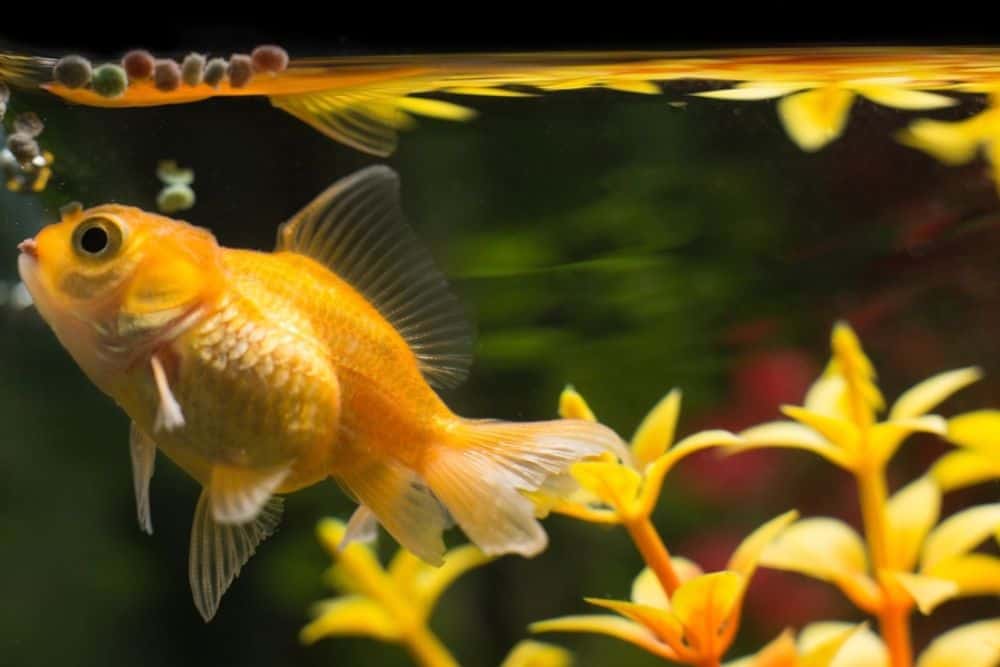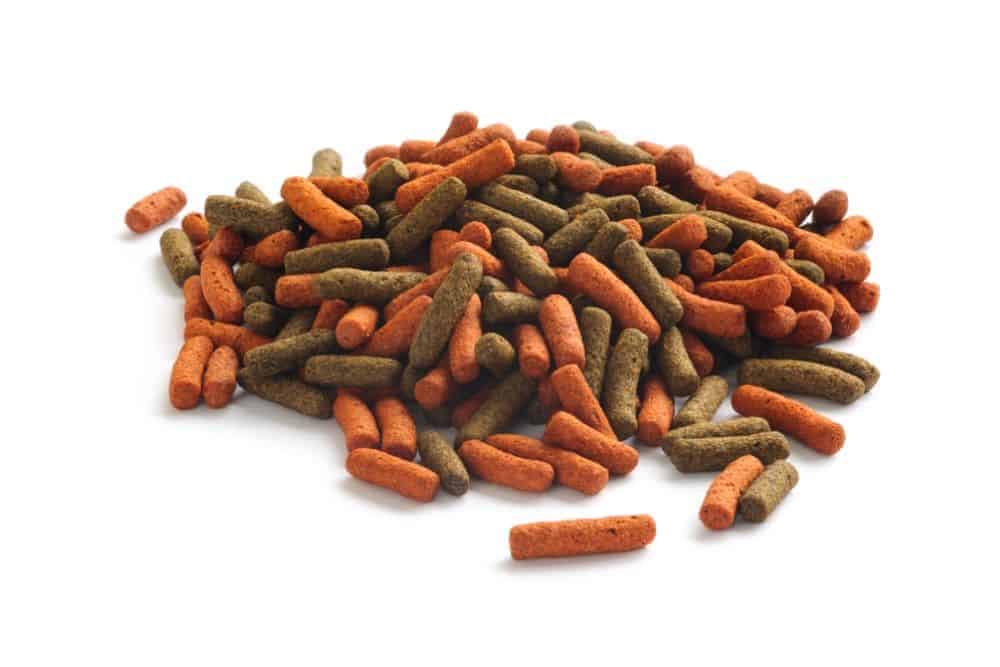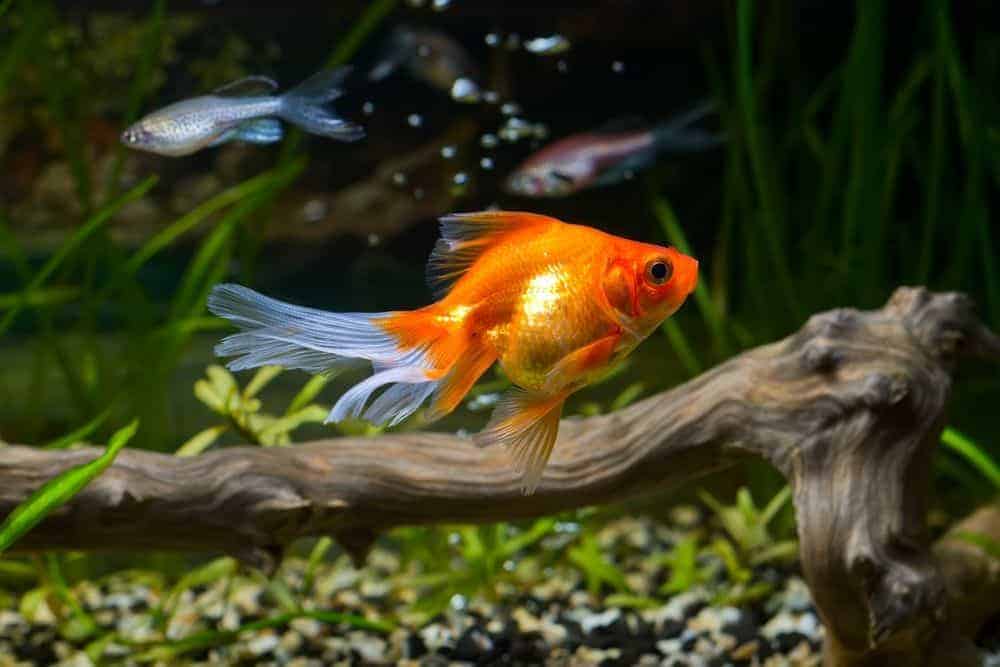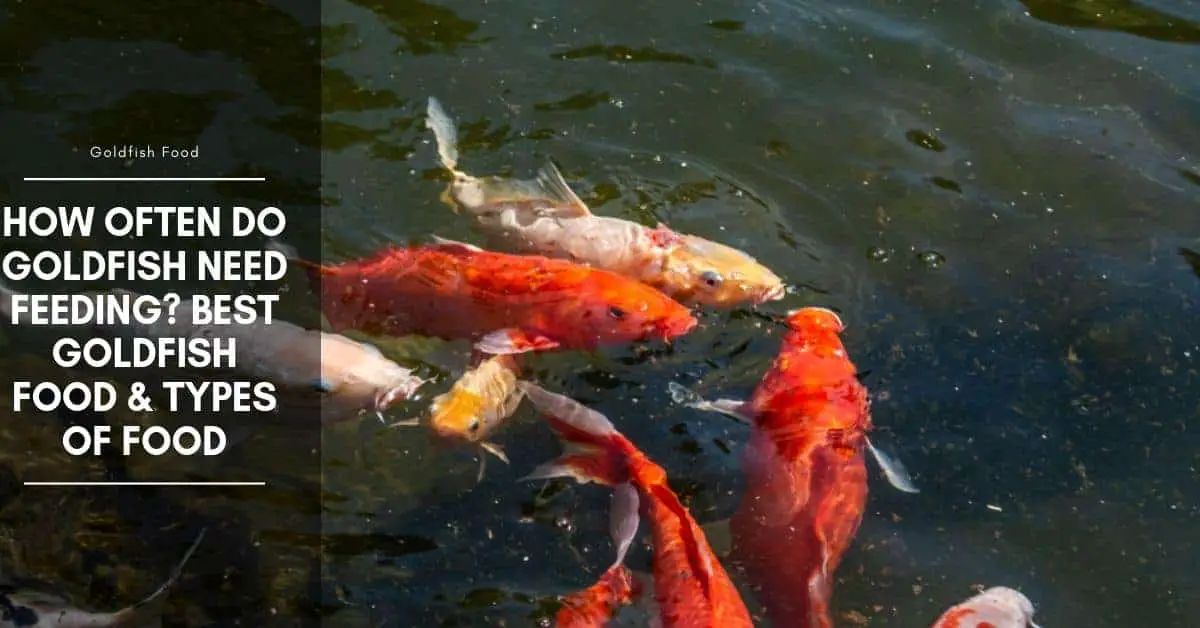There is much more to feeding your goldfish than you may realize. It is important that you follow specific guidelines, as well as understand that you can’t just feed your fish anything when you feel like it. It’s not that goldfish are picky creatures; on the contrary, the reason is that goldfish are actually pigs disguised as fish.
If given the chance they will literally eat themselves to death. In fact, the number one cause of death in pet goldfish is overeating. Therefore, you as the proud owner of your beloved little oinker must ensure that you are controlling your fish’s diet by feeding them limited quantities of healthy food.
How Often Should I feed my goldfish?
There are many theories flying around about how many times a day you should feed your fish. 2 times a day for 7 days a week would be fine. That’s right, you should feed your fish twice a day, every day (unless you are breeding them).
However, when you choose to feed them is entirely up to you, because it all depends on your daily schedule. Nevertheless, you will want to ensure that there is a long enough time span between feedings. The best way to make certain of this is to feed your goldfish with consistency.

For example, you could choose to feed them when you wake up and before you go to bed; before you go to work and when you come home from work; or after you eat breakfast and after you eat dinner. Whatever you decide, make sure that you stick to the same routine and feed them the same amount each time.
If on the odd chance you forget to feed your fish twice, do not give them an extra amount of food during their next feeding time. Continue to stick to your schedule as planned. Don’t worry, your fish will not become ill or starve even if you forget and skip a whole day without feeding them.
If they have to, goldfish, like many other cold-blooded aquatic creatures, can go for long periods of time (approximately 2 weeks) without eating food. Thus you don’t have to beat yourself up if you forget to feed your fish every so often, they won’t resent you, die or become ill.
How much should I feed my goldfish?
The best way to determine how much food your goldfish should consume is to only feed them the amount of food they can eat during the course of a 2-3 minute period. Monitor how much food you distribute during this time, and remove any excess food from their tank by siphoning it out with a gravel vacuum.
To make yours and your goldfish’s life easier it is a good idea to pay close attention to how much food they eat when you perform this first trial run. That way you don’t have to waste your money on uneaten food, and you won’t harm your fish by letting them over-eat their required amount.
What should I feed my goldfish?
Although primarily herbivores, goldfish are omnivores and will eat just about any fish food you put in the tank. However, like most living creatures, goldfish require a specific amount of nutrients to remain healthy and colorful; so if you wish for your goldfish to live a long life, you will want to make sure you are feeding them a balanced diet of both vegetables and protein.
Best goldfish food
Quality fish food ingredients, containing all of the necessary nutrients and color enhancers may look like the following high-quality fish flake:
- Shrimp Meal, White Fish Meal, Brewers’ Dried Yeast, Wheat Flour, Soybean Meal, Wheat Germ Meal, Carotene, Protease, Thiamine Mononitrate, Riboflavin, Pyridoxine Hydrochloride, Vitamin A, L-Ascorbyl-2-Polyphosphate, Vitamin B12, Biotin, Calcium Pantothenate, Choline Chloride, Vitamin D3, Folic Acid, Menadione Sodium Bisulfite, Inositol, Para-Aminobenzoic Acid, Zinc Sulphate, Manganese Sulphate, Salt, Ferrous Sulphate, Copper Sulphate, Cobalt Sulphate, Aluminium Hydroxide, Magnesium Sulphate.
- Fish Meal, Wheat Flour, Cod Liver Oil, Tomato, Rice Flour, Beetroot Powder, Barley Flour, Tagetes Meal, Dried Kelp, Salt, Diacetyl Tartaric Acid Esters of Mono and Diglycerides, Calcium Carbonate, Choline Chloride, Egg Product, Torula Dried Yeast, Turmeric, Guar Gum, Citric Acid, Propylene Glycol, Ascorbic Acid, Nicotinic Acid, Zinc Sulphate, Calcium Pantothenate, Pyridoxine Hydrochloride, Riboflavin, Thiamine Hydrochloride, Vitamin A Acetate, Folic Acid, Copper Sulphate, Menadione Sodium Bisulfite Complex, Calcium Iodate, Vitamin D3 Supplement, Vitamin B12 Supplement, Biotin.
Since much other pet fish require higher amounts of protein than goldfish, it is not safe to give your goldfish any old dried fish food; it must be specifically for them. The most popular food sold for goldfish is manufactured in the form of dry flakes. Flake food that is intended for goldfish, provides them with a basic staple diet.
Keep in mind that part of the contents of your flake food will be ash. This is included as a filler, and to make the flakes float. While this is not harmful to the fish, too much means you’re getting a cheap flake, and your fish is not receiving as many nutrients. Try to keep the overall percentage of ash under 15% to ensure that your fish is receiving all the nutrients it needs.

This goldfish food will do the trick every time you feed your fish; therefore if you have no interest in going beyond the basic care that is required in order to keep your goldfish healthy, you’re all set. However, if you choose to only feed your fish flake food, select two or three different types and alternate between using them during feeding time.
This will provide your goldfish with some variety in their diet, which can improve their quality of living without causing you any extra inconvenience. Just make sure you read the labels of the flake food, and choose only the ones that are designed to provide your goldfish with the all-around nutrients they need, because you don’t want to end up making the mistake of only feeding your fish treats, like brine shrimp.

Types of goldfish food
Of course, although some people only desire to use one type of goldfish food, there are ways that you can go beyond feeding the average flake and improve upon the quality of your fish’s life by taking an active interest in their diets.
For example, the different kinds of food that you can feed your goldfish include:
- Dry Food
- Live Food
- Frozen Food
- Homemade Food
Dry goldfish food
Dry goldfish food is the most standard and common way to feed your goldfish and comes in the form of pellets and flakes, each comprised of the same ingredients. However, just like certain flake food that you can purchase, some pellets only contain one kind of ingredient.
An example of this ingredient is brine shrimp, which is considered to be a treat to goldfish, rather than an essential source to their staple diet. That being the case, make sure you take it upon yourself to check the label of the dry food before buying it. You can purchase dry goldfish food at most pet shops.
Live goldfish food
Live goldfish food is not always the best choice for your goldfish, and the reason is that most of the food often carry harmful diseases, that can infect your goldfish once eaten. This is due to the fact that these live creatures are being sold only as food not pets; therefore, they do not receive the same quality care in a pet store.
As a result, most pet shops will not carry a variety of live food for you to feed to your goldfish. In fact, the vast majority of pet stores carry nothing more than live brine shrimp. Other live goldfish food includes mosquito larvae, daphnia, tubifex worms, blood worms, mealworms, and wax worms.
In addition, unless you are an expert on the matter, live food is not a great way to guarantee that your goldfish are receiving all of the nutrients they need. Nevertheless, if you really want to provide your goldfish with a live food treat, it is best to consult an expert about your top possible choices and sources.
Frozen goldfish food
Frozen goldfish food is simply live food that has been frozen in order to protect the goldfish from diseases. The types of frozen live food that you can procure from different pet shops include brine shrimp, mosquito larvae, daphnia and tubifex worms.
These frozen foods are usually conveniently packaged as flat slabs that vary in different sizes. This makes it easy for you to break off the pieces you wish to feed to your goldfish, while not having to waste the whole package in one setting. Whatever frozen parts you do not use, store them in your freezer for later feedings.
Homemade goldfish food
Homemade goldfish food is a great way to show your love for your goldfish by providing them with a variety of different fresh nutrients to their diet. For the goldfish lover, there are different recipes of food that you can make, but for now, let’s take a look at two of the best food items that you can give your goldfish cooked baby peas and uncooked red leaf lettuce.
To feed your goldfish peas, cook a small amount of baby peas until they are soft. You don’t want to feed your goldfish peas that are too hard, because it can give them digestive problems. Once they are cooked, place them in your refrigerator to cool. When the time comes to feed your goldfish, take out a few peas, and remove the outer layer of skin, and then proceed to mush up the remaining contents of each pea one at a time, before dropping one into the tank.
Wait until your goldfish has eaten one pea before giving another. If you wish to give your goldfish red leaf lettuce, make sure it is washed in warm water and left uncooked, as cooked lettuce can come apart in strands and become stuck in the throat of poor Flipper. Make sure you have a lettuceclip inside the tank because you will need this clip in order to attach the lettuce so it does not float around or rise to the surface.
What should I do if my goldfish don’t eat?
If you notice that your goldfish is not eating, this could be the cause of a disease or sickness in the fish, or there might be a problem with the quality of the water, or perhaps your goldfish are simply tired of the same food. Try to offer your goldfish a variety in their dry food diet, and don’t forget to check the conditions of the water and the goldfish. Keep in mind that it is strange for a goldfish not to eat food, if this is occurring, watch them carefully.
Conclusion
You would expect that you could pretty well account for everything that is in a batch of fish food.
You should usually see something like:
- 40% protein
- 44% carbohydrate (of which 14% is bulk fiber)
- 10% fats
- 6% ash (minerals and other noncombustible elements).
Notice that this totals 100%; all the contents of the ration are accounted for by this nutritional analysis.
If you pick up a commercial food container, it will usually only account for 70-80% of the contents on the labeling. This may be because they simply leave out a nutrient like “carbohydrates,” but it is hard to know.
In general, it seems appropriate that recommendations of specific nutrient levels in a diet should include all the main elements.
So for summary:
- Feed your Goldfish as much as they can eat in 2-3 minutes (scoop out excess).
- Give them a little variety in the chosen food.

Hi, my name is Sean, and I’m the primary writer on the site. I’m blogging mostly about freshwater and saltwater aquariums, fish, invertebrates, and plants. I’m experienced in the fishkeeping hobby for many years. Over the years I have kept many tanks, and have recently begun getting more serious in wanting to become a professional aquarist. All my knowledge comes from experience and reading forums and a lot of informative sites. In pursuit of becoming a professional, I also want to inspire as many people as I can to pick up this hobby and keep the public interest growing.
Read more about Sean.
Please join also my Facebook group.

